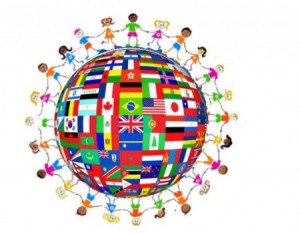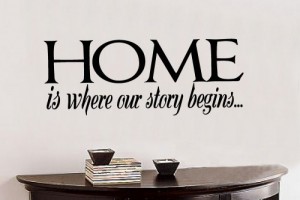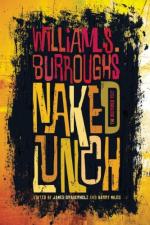The sun peeked through the ivory curtains and wiggling my toes, I slowly rolled onto my stomach placing the pillow on top of my head. Suddenly, the door moves and slams the wall and I woke up with a fright!

It was my younger brother. He jumps onto the bed and starts bouncing around and making an announcement with his two small hands near his mouth saying that today is a big day! I rubbed my eyes, swinging my legs off the bed frame and decided to get dressed.
Everything was red and gold. There was bright red banners tapped around the house, along with an assortment of treats in a beautiful tray known as the tray of togetherness. I picked up a fruit candy from the tray and walked to the kitchen. I see my grandparents and mother preparing food for lunch. There was many dishes on the table ranging from fish, shrimp, stir-fried vegetables , and much more! Each dish was colourful and appealing. Then, I asked them If there was anything I can help with.
“Mom, what are you making next? Can I help you?”
“The dishes are almost ready, how about you help me grab all the bowl and chopsticks”
“How many do we need?”
“Let’s say around twenty, can you do that for me?”
“Oh wow! But there is only around five of us here. Will there be more people coming?”
“Yes, my sweetie. Your relatives such as your Aunts, Uncle, and cousins”
“Okay! Yay I get to see Uncle Ben and them”
I pulled a chair in front of the kitchen cupboard and stretched my arms to grab the bowls. One by one I grabbed them and placed it carefully on the table. And not too long after, the door bell rings. My mother opens the door and everyone greets each other saying 新年快乐(xin nian kuai le) ! After hearing those loud greetings, I rushed down the stairs and gave everyone a big hug but Uncle Ben decides to not hug me yet and asked me something.
“Karen, do you know what animal it is this year?”
“Umm… Ah! Last year was sheep”
“Yes, but I’m asking this year’s animal”
“Can you give me a hint?”
“Okay sure. It’s animal that is smart, adventurous, and flurry”
“But all animals have flur though”
“Haha, think about the animal from that famous movie called Journey to the West that flies on a cloud”
“Oh! I remember now. It’s the monkey..its the year of the monkey!”
“Haha yes, you are very smart!
Uncle Ben messes my hair and then my mother calls everyone for lunch. And then everyone grabs their cup and says 新年快乐(xin nian kuai le)!
—–
I am born and raised in Vancouver. One of the biggest gatherings for Chinese households would be Chinese New Year. My sense of home is basically having a homemade dinner with all my family members and relatives. It’s a time where everyone that you love and care about gathers together and feast to celebrate the new year. And each year there is a new animal and this year for 2016, it is the year of the Monkey! I thought about writing about this because we are currently celebrating this right now and each year it always brings me warmth.
This short story always brings me back memories where I would wake up on Chinese New Year and my family prepares food for us all. Now growing up, I have been participating in the process of preparing the Chinese New Year dishes and decoration of the house.
Here is a photo of this year’s Chinese New year lunch I helped prepare ( and in case you are wondering what the dark stuff on the left side of this photo.. it’s black sea cucumbers haha)

Every year my grandparents and family put a lot of effort in preparing for CNY dinner and looking at all this food on the table..I feel so blessed and spoiled. It is that feeling where you see all the homemade food prepared right in front of you. The process of passing the bowls and plates and conversation shared amongst everyone. It is the loudness of laughter and eating lots! I’m sure a lot can relate that elders have the tendency to always put more food on your plate. And of course, the red pockets. Children learn the traditional greetings and then they will receive red pockets. It’s the joy of saying good things to each other and not so much of the money that is received. And if you do not celebrate Chinese New year, I’m sure Christmas is another great example of how one can feel their sense of home.
Thanks for reading!
Karen
Work Cited
Moss, Stephen. “Is Hong Kong Really Rioting Over Fishball Stands?” the Guardian. N.p., 9 Feb. 2016. Web. 9 Feb. 2016. <http://www.theguardian.com/lifeandstyle/shortcuts/2016/feb/09/hong-kong-fish-ball-revolution-china-riot>.
Parkinson, Rhonda. “Chinese New Year Food” Tray of Togetherness. Web. 9 Feb 2016. <http://chinesefood.about.com/od/foodfestivals/ig/new-year-food/Tray-of-Togetherness.htm>.
Hoffmann, M. “Chinese New Year Tradtions: Preparation Time!”. Web. 9 Feb.2016. <http://www.china-family-adventure.com/chinese-new-year-traditions.html>.
Chan, Cm. 齐天大圣孙悟空粤语2013. Youtube. N.p., 3 Oct.2013. Web. 8 Feb.2016<https://www.youtube.com/watch?v=RfWJ8uXsRaI>.
 s unpack and discuss about the idea of ‘multiculturalism’!
s unpack and discuss about the idea of ‘multiculturalism’! What I discovered…
What I discovered…


 ms or concepts but is also often used to link to another website to find out more information on that particular subject. This is also interesting because last term I was reading William S. Burroughs ‘s novel called
ms or concepts but is also often used to link to another website to find out more information on that particular subject. This is also interesting because last term I was reading William S. Burroughs ‘s novel called 